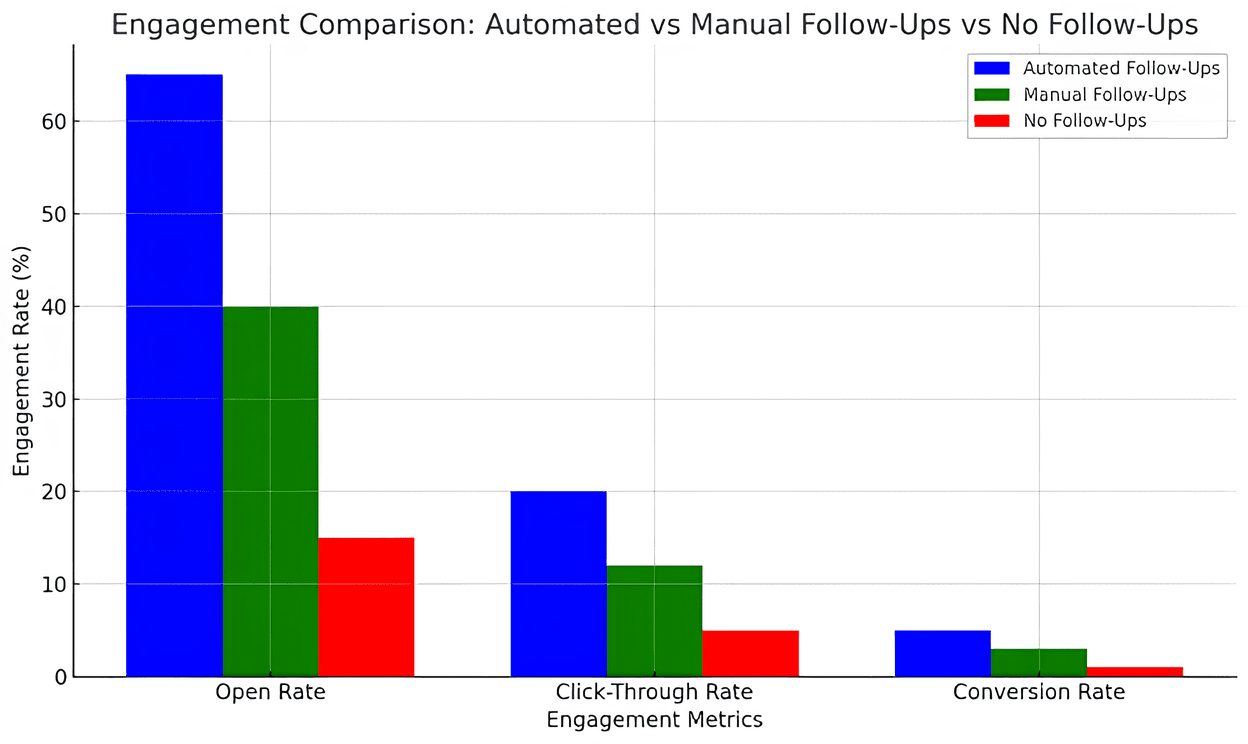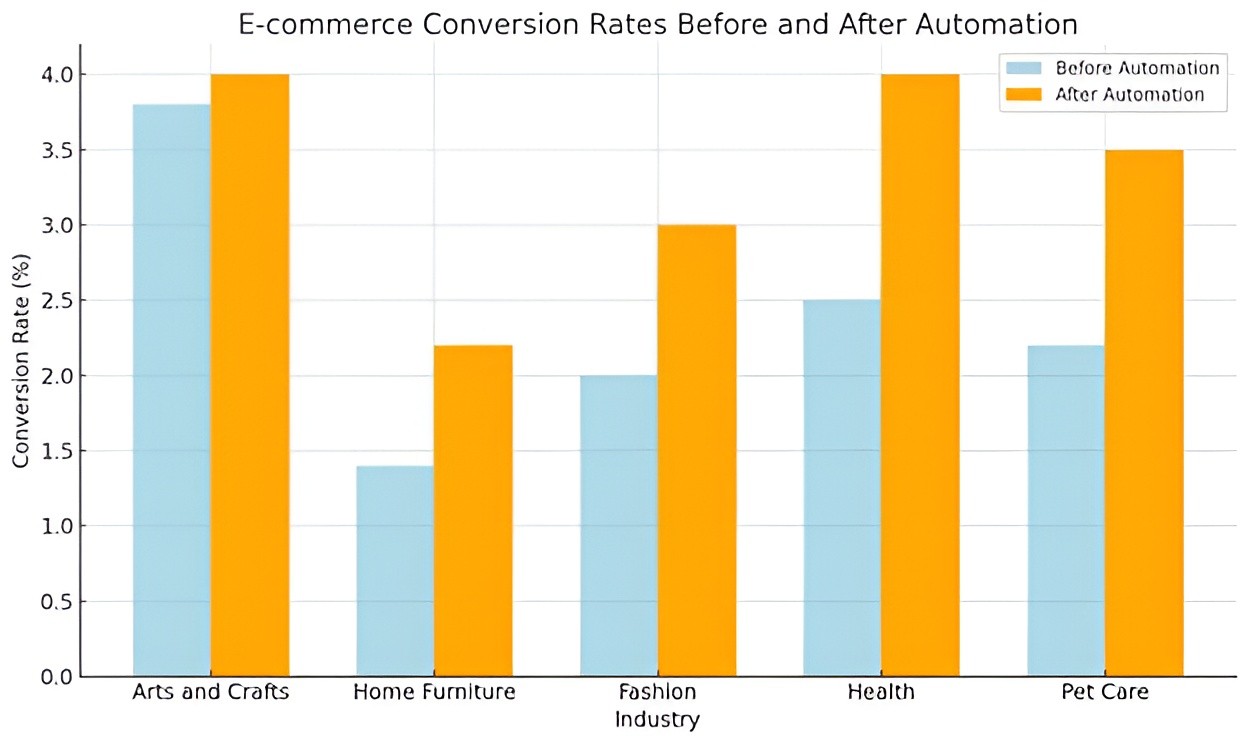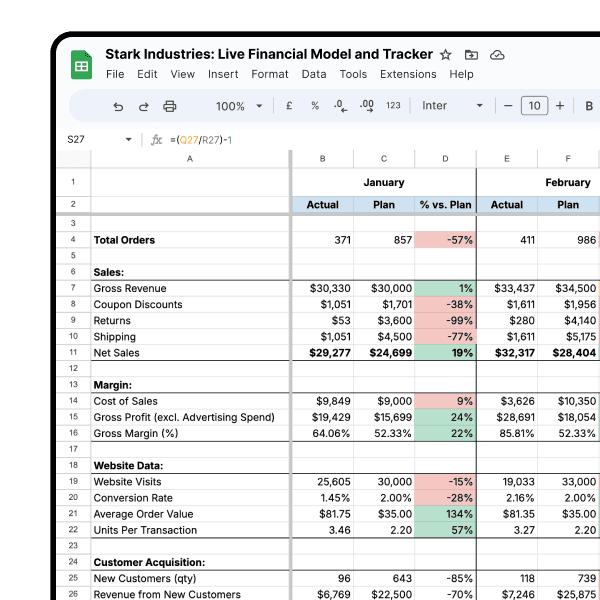Best Practices
Nov 8, 2024
TLDR
This guide explains how to automate an e-commerce sales funnel to maximize efficiency and customer experience across all stages - from awareness to retention. The key strategies include using chatbots for initial engagement, automated email campaigns for nurturing leads, streamlined checkout processes, and automated post-purchase engagement tools like loyalty programs. By implementing these automation tools, businesses can reduce manual work while improving customer engagement and sales performance.
In e-commerce, building a sales funnel that practically runs itself can make all the difference. Automation will save you time, but more than that, it will create a better experience for your customers at every stage — from the first interaction to post-purchase engagement.
This detailed guide will help you set up automated strategies that attract new visitors, keep them engaged, and convert them into loyal customers, all while maximizing your sales efficiency.
Awareness Stage: Automating Lead Generation and Traffic Growth
To grow your e-commerce business, you need more than just traffic — you need the right tools to attract, engage, and capture your potential customers from the start. Automation helps you do exactly that and turns your visitors into leads without you lifting a finger.
Whether it’s through smart chatbots, optimized social media ads, or automated email collection, these strategies ensure you never miss an opportunity to connect. Let’s dive into a few ways you can set this on autopilot and start seeing results faster.
Using Chatbots for Initial Engagement
When potential customers land on your site, they usually have questions, and that’s a good thing. They want to know more about your product or service. What’s not such a good thing is for your customers to wait for ages for replies and emails.
That’s where chatbots come in handy: answer basic FAQs, guide visitors through your offers, and even qualify leads by collecting information about their preferences and needs. While chatbots might not offer the human touch your team does, they are perfect for that initial contact and sharing relevant information that will make your customers stick around longer.
Tools like Tidio and LiveChat make it easy to add chatbots to your website, allowing you to customize responses and ensure every visitor gets what they need in real-time.
Automated Social Media Ads Campaigns
Your audience spends a lot of time scrolling through social media, which is the perfect opportunity to use automated ad campaigns to help you stay in front of the right people at the right time.
By automating your ad management with simple platforms such as Meta Ads or Google Ads, you can optimize how your budget is spent and ensure your ads reach people who are more likely to engage with your e-commerce business. These tools also let you retarget visitors who browsed your site but didn’t make a purchase, bringing them back when they’re ready to buy.
Email Capture and Lead Magnets
Capturing emails is still one of the most effective ways to build a relationship with your audience. While this is a highly personalized connection, you can still use automation to deliver lead magnets such as discount codes or downloadable resources. This way, you can entice and engage your visitors to share their email addresses.
Once you have the address, you can segment your audience into different groups based on their actions or interests, making all of your future campaigns more relevant and personal. There are many tools to help you with this, such as OptinMonster, where you can create visuals, pop-ups, and forms that capture attention without being intrusive. For example, if you own an online clothing store, you can offer a 10% discount code through a pop-up that appears after a few seconds on the site, instantly emailing the code to anyone who signs up.
Moving further with automation, you can then trigger automated follow-ups, like recommending best-sellers or exclusive deals, keeping new leads engaged, and smoothly guiding them through your funnel.

Data Sources: HubSpot, Campaign Monitor, Yesware, GetResponse, Omnisend
Consideration Stage: Automating Nurturing and Engagement
Getting someone’s attention is just the first step. Your goal is to keep them engaged. Luckily, you can still use automation to nurture strategies like personalized emails, product recommendations, and retargeting ads. This way, you will easily stay connected with potential customers at every touchpoint.
Let’s explore how you can use these tools to guide leads smoothly toward a purchase without any extra heavy lifting on your part.
Automated Email Drip Campaigns for Lead Nurturing
Once a visitor shows interest, it’s important to keep your brand in their mind. Automated email drip campaigns are perfect reminders that send personalized emails based on what your visitors do on your e-commerce site.
For example, someone might browse your product page but decide to leave before making any purchases. You can send an automated follow-up email with more details about that product or even a similar recommendation.
Considering you already have the email addresses of your potential buyers and you did the segmentation in the awareness stage it’s now much easier to target the right people with right messages. With this kind of setup, customers feel engaged rather than overwhelmed by spam emails, and you are gently nudging them toward purchase with minimal manual effort.
Product Recommendation Engines
Have you ever noticed how e-commerce stores know exactly what you might want next? That’s the magic of product recommendation engines. These tools use AI to automate cross-selling and upselling based on what customers have browsed or purchased. If someone buys a pair of shoes, the system can automatically suggest matching accessories or similar items.
Apps like Nosto or ReConvert for WooCommerce integrate seamlessly with your store to recommend products right on the product page, checkout page, or through follow-up emails, helping you boost sales without additional manual effort.
Retargeting Campaigns
Even the most engaged customers don’t always buy on their first visit. This lack of immediate purchase doesn’t mean they are lost as your buyers. Retargeting campaigns let you automatically serve ads to those visitors as they browse other websites, reminding them to return and complete their purchase.
If they abandon their cart, for example, you can show them the exact product they left behind along with a special offer to encourage them back.
To maximize your visibility across platforms and reach people with your retargeting campaigns, you need to set up omnichannel strategies. For brands using video content to reconnect with customers, adding hashtags to YouTube videos can help increase discoverability. This is where a YouTube hashtag generator tool comes in handy. You can use the hashtag generator to identify trending hashtags relevant to your product or campaign, ensuring your videos show up in front of the right audience. Automating this process saves time and ensures your retargeting efforts are optimized for video platforms.
Decision Stage: Streamlining Checkout and Payment Automation
At the decision stage of your e-commerce sales funnel, every second counts. This is the moment your customers are ready to buy — but any friction in the checkout process can quickly turn excitement into hesitation.
Streamlining checkout and automating payment processes ensures that your buyers glide smoothly through to purchase without second-guessing or delays.
Re-engaging Abandoned Carts with Smart Automation
When your customers add items to their carts, it’s a great start but often not the last step for your e-commerce business. Some of those carts will get abandoned, and it’s your job to pick the right automation strategy to remind them to finish the purchase.
If your product benefits from a more detailed showcase, this is where a demo automation app becomes invaluable. Embedding a product demo directly in the follow-up email helps re-engage potential customers by showing exactly how the item works or fits into their needs. Automated sales demos give them a clearer understanding of the product and build the confidence needed to finalize their purchase.
One-Click Checkout Integration
Nobody likes or has the time for a complicated checkout process. The fewer clicks it takes to buy, the better. Integrating one-click checkout options like Shop Pay or Apple Pay makes it easy for customers to complete their purchases with minimal effort.
This simple automation reduces friction and speeds up the entire checkout process, leading to fewer drop-offs and more completed orders.
Payment and Order Confirmation Emails
After your customers hit that “Buy” button, the last thing they want is to be left wondering what’s next. Automated payment confirmations and order updates ensure they get all the details (receipts, tracking numbers, and order summaries). It’s a simple way to keep them in the loop and let them know everything’s on track.
These emails do more than just reassure your customers, as your support team will get fewer messages and inquiries about the location and the arrival of orders. By answering common questions upfront, you save everyone time and keep things running smoothly. Whether it’s a quick thank-you note or a detailed shipping update, automated messages help you stay connected and create a stress-free experience.
Retention Stage: Automating Post-Purchase Engagement
Your e-commerce journey doesn’t end when a customer makes a purchase. It’s the beginning of your long-term connection, so engagement is crucial for this part of your sales funnel.
Post-purchase automation helps you build lasting relationships, encourages repeat business, and turns one-time buyers into loyal customers. Here are a couple of examples of how you can automate this journey:
Automated Feedback and Review Requests
Once your product is delivered, it’s the perfect time and opportunity to ask for feedback. Automated review requests help you gather testimonials but also remind your customers that their opinions matter. Tools like Yotpo or Loox can trigger these requests a few days after delivery, making it easy to collect valuable feedback without chasing down reviews manually.
Loyalty Programs and Personalized Discounts
Rewarding your customers with automated loyalty programs is a great way to keep them engaged with your e-commerce business. You can set up birthday discounts, loyalty points, and reorder reminders that are sent at just the right moment.
Use tools like Smile.io or WooCommerce Points & Rewards to handle everything behind the scenes so you can offer personalized rewards without extra effort.
Reconnecting Through Influencer-Driven Campaigns
Even the most dedicated customers might drift away over time, which is where automated re-engagement campaigns can work wonders. You can send personalized emails with special offers to those who haven’t shopped with you in a while.
For businesses that collaborate with influencers, it’s also essential to track influencer content as part of your re-engagement strategy. Monitoring how influencers mention your brand helps you fine-tune these campaigns and reconnect with customers who might have discovered your store through those influencers. By using tools that track influencer content across multiple platforms, you can ensure your brand stays visible, relevant, and appealing, encouraging past customers to return and make new purchases.
Improve your DTC game. Sign up for weekly tips.
Analytics and Continuous Optimization with Automation
If you want to keep your e-commerce sales funnel running at its best, you need to track performance and make adjustments. One of the best things about automation is the ability to monitor plenty of data and key metrics with ease.
Here are a few ways you can analyze and optimize your sales funnel:
Automated Funnel Reports and KPIs Tracking
Keeping an eye on your funnel’s performance doesn’t have to mean logging in daily.
Various tools, such as Airboxr, Google Analytics, or HubSpot, automate reports and provide regular insights into crucial metrics like drop-off rates and conversion spikes. You can also set up alerts for specific KPIs and get instant notifications if something urgent needs your attention.

Data Sources: Speed Commerce, Smart Insights, HubSpot Blog, Ecommerce Guide
A/B Testing Automation
Testing different elements of your campaigns is the key to optimizing results, but it can be time-consuming. Automated A/B testing, on the other hand, makes this process faster and more efficient. You can compare email subject lines, ad creatives, and landing pages without any manual checks.
These A/B tests can run in the background and provide real-time insights on what resonates best with your audience. So, with automated testing, you can constantly improve your strategies based on data rather than guesswork.
Workflow Automation for Updates and Improvements
When your funnel metrics change, your team needs to know right away.
Workflow automation tools like Zapier or Integromat can automatically create tasks, send notifications, or update spreadsheets whenever a KPI shifts. For example, if your funnel’s conversion rate spikes or drops, these tools can notify your team instantly, ensuring everyone’s on the same page and ready to act. Automating these updates creates a seamless workflow that keeps your team focused on improving the funnel’s performance.
The Power of Automation: Scaling Your E-commerce Success Effortlessly
Automating your e-commerce sales funnel brings efficiency, consistency, and real impact to every stage of your customer journey.
By setting up smart automation tools, you can engage potential buyers and nurture leads, streamline the checkout process, and create long-term loyalty — all without constant manual work.
This automated approach lets you focus on growth and strategy while your funnel optimizes itself. Embrace these tools and watch your e-commerce business thrive with less effort and more results.

Ahmad Benny, Guest
About the Author
Ahmad Benny is the Founder of Bengu, a site that helps marketing teams cut through the noise on B2B SAAS software to help them make an informed buying decision. On the site, you can find expert-led reviews and how-to guides on a variety of marketing topics

